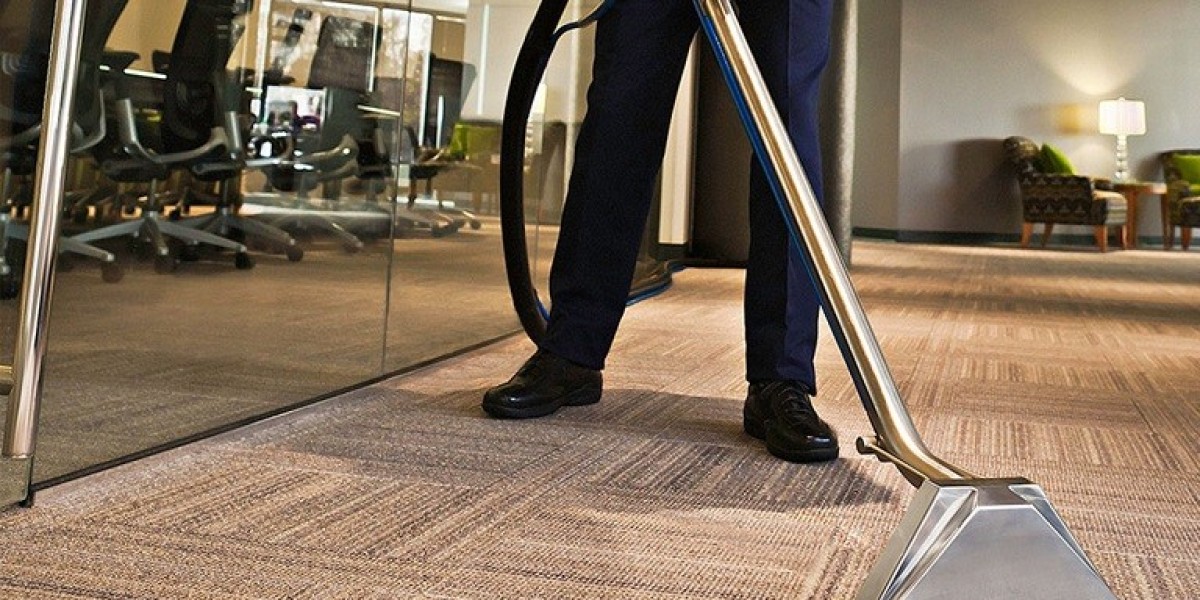Conquering Common Issues: A Comprehensive Guide to Bi-Fold Door Repair
Bi-fold doors, likewise called folding doors or concertina doors, offer a trendy and space-saving service for dividing rooms or linking indoor and outdoor spaces. Their capability to fold neatly away when open maximizes space and produces a seamless transition. However, like any mechanical system, bi-fold troubleshooting bifold doors can experience wear and tear in time, leading to various functional issues. Comprehending how to diagnose and resolve these typical problems is essential for keeping the functionality and durability of your bi-fold doors.
This post serves as a detailed guide to bi-fold door repair, using detailed guidelines and informative guidance for dealing with common problems. Whether you're handling sticking doors, misalignment, or hardware malfunctions, this guide will equip you with the understanding and self-confidence to bring back smooth operation to your bi-fold doors.

Common Culprits of Bi-Fold Door Problems
Before diving into repairs, it's necessary to understand the typical problems that plague bi-fold doors. Recognizing the origin is the initial step towards efficient resolution. Here are some of the most regular problems house owners encounter:
- Sticking or Binding Doors: This is maybe the most common problem. Doors that stick or bind during opening and closing can be discouraging and indicate a number of underlying concerns. Typically, this is because of friction between door panels or in between the doors and the track system.
- Doors Not Closing Properly or Latching: If your bi-fold doors stop working to close flush or latch firmly, it jeopardizes security and insulation. This issue typically comes from misalignment, latch system problems, or obstructions in the track.
- Harmed or Worn Rollers and Tracks: Bi-fold doors rely on rollers moving smoothly along tracks to operate. Over time, these components can wear down, become obstructed with debris, or perhaps break. This causes jerky movement, sticking, and increased effort needed to operate the doors.
- Loose or Damaged Hinges and Pivots: The hinges and pivots are the pivot points that enable the doors to fold and move. Loose screws, worn hinges, or damaged pivots can cause doors to sag, become misaligned, and run improperly.
- Misalignment of bifold door off track Panels: Over time, the panels of a bi-fold door can become misaligned relative to each other and the frame. This misalignment can cause rubbing, binding, and difficulty in closing and latching.
- Loose or Missing Hardware: Screws, brackets, and other hardware can loosen up gradually due to vibrations and regular use. This can cause instability, rattling, and eventually, practical problems.
Tools and Materials for Bi-Fold Door Repair
Having the right tools and materials on hand will make the repair process smoother and more efficient. While particular requirements may vary depending upon the issue, a standard toolkit for bi-fold door repair need to consist of:
- Screwdrivers: Both Phillips head and flathead screwdrivers in different sizes.
- Allen Wrenches (Hex Keys): Often used for adjusting rollers and hinges. A set of numerous sizes is advised.
- Pliers: For gripping and manipulating small parts.
- Hammer: For gentle tapping and changes.
- Measuring tape: For precise measurements when adjusting or changing parts.
- Level: To ensure doors are plumb and level during changes.
- Lube: Silicone-based lube is ideal for tracks and rollers as it doesn't draw in dust. Prevent oil-based lubes that can become gummy over time.
- Cleaning up Supplies: Brush, vacuum cleaner with crevice tool, and a wet cloth for cleaning tracks and rollers.
- Replacement Parts: Depending on the diagnosis, you may need replacement rollers, hinges, rotates, screws, and even track sections. Recognizing the specific kind of hardware utilized in your doors is crucial when sourcing replacements. Think about taking an old part to a hardware store for matching purposes.
- Wood Shims (Optional): For small alignment adjustments.
- Security Glasses: To safeguard your eyes during repair work.
- Work Gloves: To protect your hands.
Step-by-Step Guide to Common Bi-Fold Door Repairs
Now that you understand typical issues and have the necessary tools, let's explore how to address particular problems.
( 1) Addressing Sticking or Binding Doors:
- Step 1: Cleaning and Lubrication: Begin by completely cleaning up the tracks, both upper and lower, with a brush and vacuum cleaner to get rid of dust, particles, and pet hair. After cleansing, use a silicone-based lubricant along the tracks and to the rollers. Operate the doors a number of times to disperse the lubricant. This basic action often resolves small sticking problems.
- Step 2: Roller Adjustment: If lubrication does not completely deal with the issue, take a look at the rollers. Lots of bi-fold door rollers are adjustable using screws or Allen wrenches. Find the change mechanism on the rollers (typically on the leading or bottom of the door panel, near the roller). Carefully adjust the rollers to guarantee they are all in contact with the track and moving efficiently. Prevent over-tightening, which can cause binding.
- Step 3: Hinge and Pivot Inspection: Check the hinges and pivots for looseness or damage. Tighten up any loose screws. If hinges or pivots are noticeably damaged, they will require to be replaced. Note the type of hinge and pivot before purchasing replacements.
( 2) Repairing Doors That Don't Close or Latch Properly:
- Step 1: Latch and Striker Plate Alignment: Examine the latch and striker plate (the metal plate on the frame that the latch engages with). Make sure the latch is appropriately lined up with the striker plate. If they are misaligned, you may need to adjust the striker plate. Loosen the screws holding the striker plate, reposition it slightly up until the latch engages efficiently, and then retighten the screws.
- Action 2: Door Panel Alignment: Misaligned door panels can avoid appropriate closure. Visually check the doors when closed. Are any panels rubbing versus each other or the frame? Minor misalignment can in some cases be fixed by changing the hinges or pivots. For more substantial misalignment, you might require to consider shimming behind hinges or changing track positions (for more intricate cases, expert aid may be needed).
- Action 3: Obstruction Check: Carefully check along the whole track and door pathway for any blockages that may be avoiding appropriate closure. This could be debris, loose objects, or perhaps distorted floor covering near the door opening.
( 3) Replacing Damaged Rollers and Tracks:
- Step 1: Roller Replacement: Identify the kind of rollers used in your doors. Get rid of the old roller by unscrewing or unclipping it from the door panel. Install the brand-new roller, ensuring it is firmly attached and appropriately aligned. Repeat for all damaged rollers.
- Action 2: Track Replacement (More Complex): Replacing tracks is a more involved process. It typically requires removing the door frame trim and possibly handling structural components. If you are comfy with more advanced DIY jobs, you can try track replacement. Nevertheless, if you are not sure, it is advised to speak with an expert. To replace a track:
- Carefully eliminate the trim surrounding the bifold door specialists frame.
- Unscrew and eliminate the old track sections.
- Install the new track areas, ensuring they are level and aligned properly.
- Re-install the trim.
( 4) Tightening Loose Hardware and Replacing Damaged Hinges/Pivots:
- Step 1: Tightening Loose Hardware: Systematically examine all screws and bolts on the hinges, rotates, rollers, and tracks. Tighten any loose hardware. If screws are removed and not tightening up, consider using slightly longer or thicker screws, or using wood filler to provide much better grip for the screws (particularly for wood frames).
- Step 2: Replacing Hinges and Pivots: To replace a broken hinge or pivot:
- Support the door panel to avoid it from sagging or falling when the hinge/pivot is removed.
- Unscrew and get rid of the old hinge or pivot.
- Install the new hinge or pivot in the exact same place, ensuring it is effectively lined up.
- Firmly fasten the new hinge or pivot with screws.
- Repeat for all damaged hinges or pivots.
Preventative Maintenance for Bi-Fold Doors
Regular upkeep is crucial to preventing many typical bi-fold door issues and extending their life expectancy. Embrace these preventative measures:
- Regular Cleaning: Clean tracks and rollers a minimum of every few months, or more often in dusty environments.
- Lubrication: Lubricate tracks and rollers with silicone lubricant every 6 months to guarantee smooth operation.
- Hardware Checks: Periodically check and tighten any loose screws or hardware.
- Gentle Operation: Avoid requiring the doors open or closed. Operate them smoothly and intentionally to lessen tension on the parts.
- Annual Inspection: At least as soon as a year, perform an extensive examination of all parts, including hinges, pivots, rollers, tracks, and lock systems. Attend to any small problems before they escalate.
When to Call a Professional
While lots of bi-fold bifold door track replacement repairs are workable for DIY lovers, some circumstances warrant expert intervention. Think about calling a handyman or door professional if:
- You are uncomfortable with DIY repairs. Safety and correct performance are paramount.
- The problem is complex or the cause is unclear. Professional diagnosis can conserve time and prevent further damage.
- You are dealing with structural problems. If the door frame or surrounding wall structure is harmed, professional proficiency is important.
- You need to replace entire tracks or door panels. These jobs can be more complex and need specialized tools and knowledge.
- You do not have the required tools or time.
Conclusion
Bi-fold doors are a valuable addition to any home, offering flexibility and design. By understanding common issues and implementing standard repair and upkeep techniques, you can keep your bi-fold doors running efficiently and effectively for many years to come. This guide provides a strong foundation for dealing with normal repairs. Keep in mind to prioritize safety, work methodically, and don't think twice to look for professional aid when needed. With a little effort and knowledge, you can ensure your bi-fold doors continue to enhance your home.
Frequently Asked Questions (FAQs) about Bi-Fold Door Repair
Q1: Why are my bi-fold doors so hard to open and close?A: The most typical factors are dirty or dry tracks and rollers. Start by cleaning and lubing these parts. Other causes can include misaligned rollers, harmed rollers or tracks, or misalignment of the door panels themselves.
Q2: What type of lube should I use on bi-fold door tracks?A: Silicone-based lubes are suggested. They are clean, dry, and will not attract dust and dirt like oil-based lubricants, which can ultimately become sticky and prevent door operation.
Q3: How typically should I oil my bi-fold door tracks?A: Lubricating every 6 months is a great basic standard. However, if you notice your doors ending up being stiff or noisy, you may require to oil them more often.
Q4: Can I replace just the rollers on my bi-fold doors?A: Yes, in many cases, you can replace individual rollers. Identify the kind of roller you require and acquire replacements at a hardware shop or online.
Q5: My bi-fold doors are scraping against the flooring. How can I repair this?A: This might be due to a number of reasons, consisting of loose hinges triggering the doors to sag, rollers that are not correctly supporting the weight, or perhaps changes in the building structure triggering minor settling. Examine hinge tightness, roller condition and modification and consider using shims under hinges if essential for small changes. For substantial issues, expert assessment is suggested.
Q6: How do I avoid my bi-fold doors from getting harmed in the future?A: Regular cleaning and lubrication, mild operation, and periodic hardware checks are key preventative steps. Prevent knocking the doors and address any minor issues without delay before they become major problems.
Q7: Are bi-fold door repairs a DIY task, or should I always call an expert?A: Many common bi-fold door repairs, like cleansing, lubrication, and small hardware adjustments, are DIY-friendly. However, for intricate problems, structural repairs, or if you are uncomfortable with DIY jobs, it's best to consult a professional handyman or bifold door repair expertise expert.







